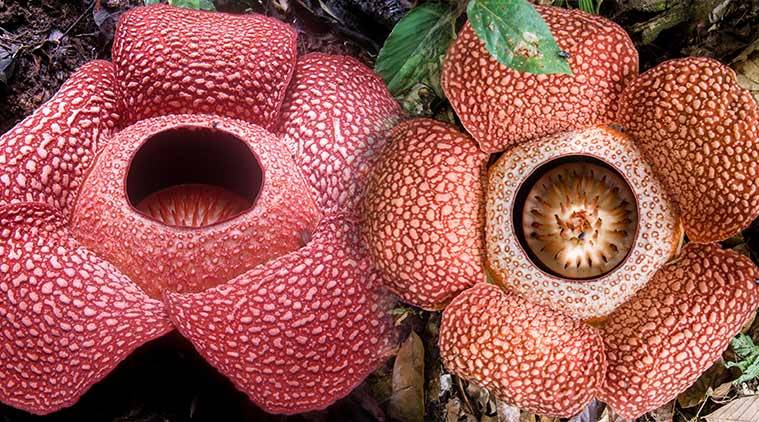 Rafflesia is the largest flower in the world and can grow up to three feet. (Designed by Nidhi Mishra/ Indian Express)
Rafflesia is the largest flower in the world and can grow up to three feet. (Designed by Nidhi Mishra/ Indian Express)
Nature never fails to amaze us. From the Great Barrier Reef engineered by living organisms, corals, to the puffer fish that can blow itself, there’s a lot to see out there in the wild. One such addition to the exhausting list is ‘Rafflesia’, the largest flower in the world.
A mysterious, parasitic plant, it lives underground and becomes visible as an improbable giant floral outgrowth. When it pops out, it looks like a giant, lumpy cabbage, unceremoniously thrown on the ground. However, the blooming glory of Rafflesia, that lasts only a day, is a sight to behold.
The next day, the flower falls apart like a decaying mushroom. But it only withers after emitting a stench to draw insects. Endowed with five heavy petals, it is hollow at the centre and carries white and red spots. It can grow up to three feet, the size of a large tractor tyre and can weigh around seven kilos.
It takes about nine months for the flower to bloom and it can only last for a week. Despite being such a huge flower, it has no root or stem and grows inside its host, a Tetrasigma vine, which is of the grape family.
There are around 20 species of Rafflesia in the world, with Malaysia and Indonesia having eight species each. While blooming, the flower emits an overpowering stench of rotten meat.
Rafflesia flowers also generate heat. This thermogenesis, as it is called, is rare in plants, but shared with a few other species that evolved in the tropics, such as skunk cabbages, which can raise their temperature by nearly 30 degrees.